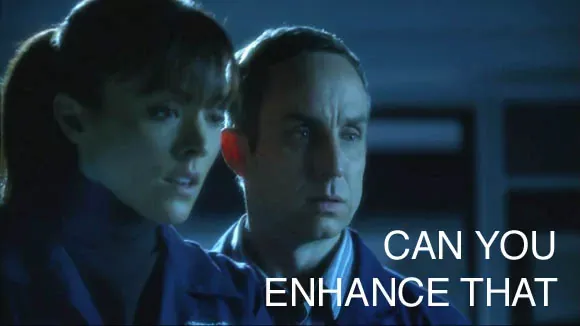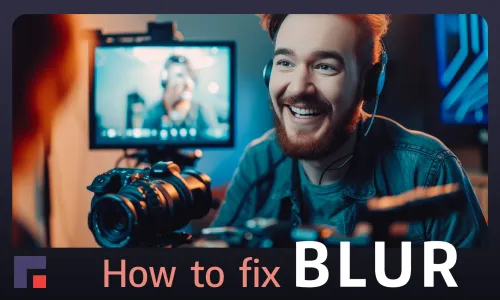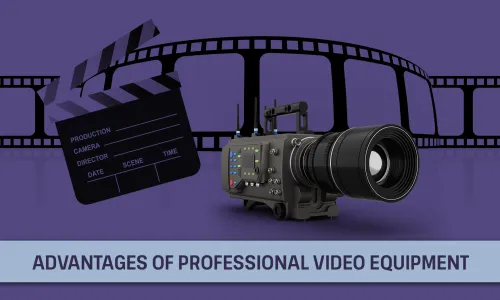There is a typical sequence in crime movies when someone examines the footage, pauses it, and then repeatedly zooms in until they have a clear, enhanced image. Can this happen? Basically no. But in a limited sense, sure. Using AI upscaling, it is feasible to enlarge and improve video in a generally pleasing way.

first step is to enlarge the media, which expands the image and scales it for a bigger screen.
Consequently, this results in a large but blurry image of far lower quality. The main challenge of video enhancement tools, called video upscalers, is to make the newly created image look realistic and preferably clearer than before.
Besides AI upscaling, a variety of methods for video upscaling are available. To appreciate the benefits of modern technology, we need to take a brief look at the progress through time.
History of Video Upscaling
The most straightforward method for upscaling is to distance the pixels and fill in the blanks by taking the values from the nearby pixels. That, however, doesn't appear to be a higher-resolution shot. It appears low-quality image consisting of larger pixels.
It can be slightly enhanced by mixing the the nearby pixels rather than simply copying the nearest ones. That's essentially what standard upscaling does. Even so, it doesn't appear to be sufficient.
According to information theory, no matter how you process data, you cannot add information that does not already exist. That implies that missing data cannot be recovered by additional processing. At some point, it means that perfectly upscaling is theoretically impossible. Some AI algorithms have led us to think otherwise.
Following particular patterns, AI video upscaler can produce details where none exist. Let's assume that the video shows grass, for instance. The AI program can rebuild the missing elements and make them appear even more accentuated if it has suitable reference material.
What is Standard Upscaling?
Standard upscaling is when pixels from the lower resolution image are copied and repeated to fill out all the pixels of the higher resolution display. New pixels are conducted based on the nearby range of known data. The resulting video can fit on a 4K display but is frequently hazy.
What is AI Upscaling?
AI upscaling utilizes a trained model and a set of collected data for training. The AI algorithm is interesting because of its ability to learn patterns from the training data. Its intention isn’t to strictly guess how the original image looked but to offer proper textures appealing to the human visual system.
AI Upscaling vs. Standard Upscaling Methods
Standard upscaling methods and AI upscaling methods work in different ways.
On the one hand, standard upscaling begins with a low-resolution image and creates new pixels by "mixing" existing pixels.
In contrast, AI upscaling methods recognize patterns in images and videos and try to guess new details that would contextually fit into the new pixels.
AI Upscaling Method
AI upscaling method uses samples from self-made data collections to fill the gaps in the higher definition video. Training an algorithm to perform better over time is an advantage of every video upscaler tool that implements artificial intelligence.
Training is done on low-resolution, high-resolution video or image pairs, so the AI can learn how to go from low-res to high-res. More data means more patterns, so that's why it's important to have as much training data as possible.
Standard Upscaling Method
Bilinear and bicubic are the most popular upscaling methods. They work with a small pixel context which makes them fast. Better results are given by the Lanczos method, although it is a bit slower. It takes more surrounding pixels, which helps prevent blurring crisp lines.
Examples
TensorPix is an example of an online video upscaler, an image and video processing tool that implements artificial intelligence. Applying a clever upscaling AI algorithm, its video restoration technology delivers a fully automated in-cloud video restoration solution. TensorPix provides a handful of AI filters that can refresh low-grade or outdated videos.
For instance, TensorPix is suitable for use on old cartoon recordings. It provides color restoration, noise reduction, film scratches, and dirt reduction. Sounds impressive, right?
Deinterlacer filter converts interlaced videos to progressive videos. FPS booster increases the video framerate so you can convert any video to 60 FPS.
200% AI Upscale effect is perfect for video with at least 1280x720 (720p) resolution because it doubles the resolution and simultaneously restores blurry details. It's ideal for converting SD video to HD or giving HD videos extra clarity.
400% AI Upscale enhances low-resolution videos that miss a lot of details. It's suitable for videos with resolutions lower than 1280x720 pixels.
Why Should You Choose an AI Upscaling Methods Over Standard Ones?
Pros +
A summary of reasons to use AI video upscale over standard methods would be appropriate.
Self-improving
AI algorithms are self-trained on countless images. With each new processing, the algorithm becomes more efficient and precise.
Much more details
The established AI model may provide incredible clarity and increased details that no standard upscaling method can match. Edges are sharper, hair strands become visible, and vistas are more vividly clear.
Widespread Application
Whether you want to enhance an old cartoon, refresh the movie colors or improve the general quality of a video you downloaded from a social network - a suitable AI upscaling algorithm can help.
Cons -
In addition to the good sides, some users also mention the downsides of applying AI effects.
Exaggerated Look
Some users say that the AI upscaling gives an exaggerated and unrealistic look to videos, sometimes over-saturated. The same users also complain about modern smartphone cameras because they don't seem to aim for natural, correct representation but rather an artificial perfection.
Limited Power
It's difficult to expect much improvement if the source is of very low quality. AI is not magic and it needs some starting data to work with. The better starting media quality, the better the results will look like.
Conclusion
The rise of online AI video enhancers like TensorPix is undoubtedly the clearest sign that AI video upscale is replacing standard techniques. Additionally, certain manufacturers feature AI-based upscaling in their streaming media players to produce incredible details.
Unpredictable changes in this industry and the full use of AI technology's potential are still to come in this era of unbelievable artificial intelligence applications.


